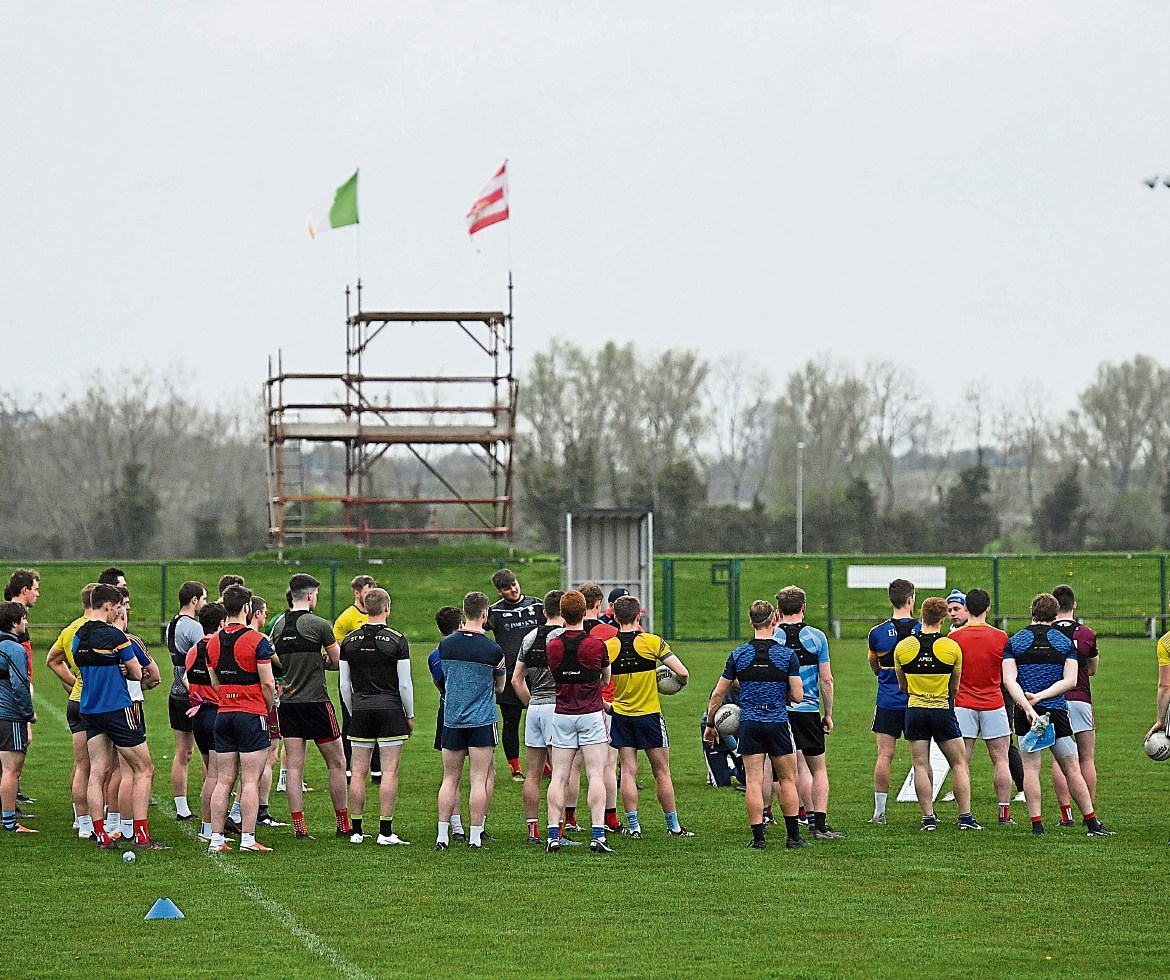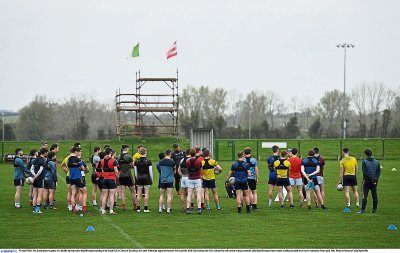HOW can we minimise fatigue onset across our player groups?
Thankfully, we have made it to the point in the season where intercounty league games are well underway and club training has taken a significant step up in intensity.
With this, it is important to remember the increased demands our bodies currently face, whether this is recovering within a six-day league turnaround at intercounty level or maximising smaller recovery windows around club training sessions. Either way it is crucial we support such demands.
Let’s be honest, it is very normal within our sport for players to experience tiredness and fatigue at some stage around training sessions. However, we want to ensure that we mitigate occurrence the best that we can.
Of course, there are many reasons for fatigue onset during or post training, such as increased training intensity, lifestyle, stress or sleep-related reasoning. However, to control for this in the best way that we can, we need to consider recovery, sleep and nutrition strategies.
So, what do we need to think about?
Well, if an athlete continues to undergo strenuous and intense exercise, the body will adapt to the new workload providing we are supporting ourselves with sufficient fuel and nutrition. But what happens if we aren’t supporting these demands appropriately with fuel?
Well, if we aren’t eating enough of the right foods in response to a peak in training volume (over a prolonged period of time), this can result in ‘relative energy deficiency (REDs)’, i.e., failure to match energy intake to the demands of your training and lifestyle, leaving inadequate energy to support health and normal bodily functions. But why is this problematic for an athlete? Well, REDs can lead to a wide range of adverse effects on an athlete’s bodily systems, potentially compromising long-term health and performance, including increasing fracture risk, hormone imbalances (including fertility challenges) and failure to perform (to name a few).
So, my advice? As a coach or member of the background team, it is important to understand and acknowledge the signs and symptoms of an athlete underfuelling for their sport, to allow for appropriate support to be provided. So, what signs should we be looking for?
1. Decline in overall sporting performance.
2. Repeated illness bouts.
3. Failure to recover from injury.
4. Increased perception of effort during sessions.
5. Mood fluctuations.
6. Poor sleep quality.
So, now we are aware of the signs, let’s take a look at nutritional strategies that can assist minimising fatigue in your players.
Plan and fuel for the
work required
Firstly, with regulations beginning to relax, our busy routines are starting to creep back in and with that can comes the challenge of appropriately planning our mealtimes around our busy schedules.
But with training and matches resuming, we also need to take the time to be proactive in planning our nutritional intake throughout the training week. Why? Well, typically our training schedules will vary in terms of duration, intensity and modality and therefore with this comes the need to periodise our energy and nutrient intake to align with energy expenditure. Will we require the same energy intake for a walk through and a two hour, high-intensity pitch session? No, because our energy output will not be the same, and therefore our food and energy intake must reflect this. Always remember to FUEL FOR THE WORK REQUIRED.
Conversely, although some athletes will purposefully restrict their energy intake to maintain an idealistic body composition for their sport, if this is not well managed and controlled, this can manifest into disordered eating patterns andor relative energy deficiency, so it is important to manage expectation around this. Plan appropriately and seek support if needed.
Embrace carbohydrates,
don’t fear them!
Carbohydrate is an essential macronutrient in the diet of a GAA player as it is a key source of energy. Not only does carbohydrate provide a source of energy to facilitate athletic performance, but is crucial to support immune function, growth, repair and maintenance of our body – so let’s not demonise or ban these foods! With this in mind, your carbohydrate intake must reflect your training load i.e., increase around longer and more intense training sessions and decrease on rest days or shorterless intense training days.
The type and duration of training will reflect and drive our carbohydrate recommendations. So, enjoy that slice of bread or bowl of pasta knowing that it is supporting your athletic goals and performance!
Fluid and hydration
It isn’t new information, that with increasing humiditytemperature, training volume and duration, comes the increased need to focus on athlete hydration.
I feel that this is an area that can be overlooked commonly in our sport, with some forgetting the impact dehydration can have on fatigue, aerobic capacity, muscle function and brain function (including concentration).
As a coach, have you considered supporting athlete hydration by creating regular training breaks or identifying opportunities across the session to allow players to get fluid on board? It could be simple, yet hugely effective.
And how do we monitor hydration? Well, a very simple method is to monitor urine colour. The darker in colour, the more likely it is that you are dehydrated. In this warmer weather, focus on including a drink at every meal and sip on watera sports drink around training. Consistency is important! Don’t wait for thirst to drink!
Sleep and nutritious foods
There is no doubt we all lead very busy lives which often leaves little time for shopping or food preparation and adequate sleep. Being poorly organised can often lead to poor dietary choices, lacking essential nutrients, that can lead to further fatigue, changes in mood and motivation as well as decreased immunity.
Further, when athletes are feeling depleted or tired, they commonly look for alternatives such as caffeine as an ‘energy boost’: however, the timing and amount may also disrupt eating and sleeping patterns, making this a vicious cycle.
Taking the time to plan and adopt a regular sleep routine can have huge impact on your decisions, choices and performance, so don’t underestimate this.
Although we could talk for days about the factors that play into fatigue onset in the GAA (with nutrition being only a small piece of the puzzle), from the above, we can now see the importance of ensuring our athletes are fuelled for the work that is required, because fatigue and tiredness are only scratching the surface of the longer-term effects of chronic underfuelling.
Be aware of and look for the cues and signs of underfuelling in your athletes and seek appropriate support if required. Although underfuelling is something we historically have not paid much attention to in our sport, we need to start speaking about these challenges and addressing!
Anne Marie is a Sport Dietitian who works with Derry GAA and Ulster Rugby.
Contact her for more information @theperformancedietitian or via email on annemariemulholland nutrition@outlook.com.
Receive quality journalism wherever you are, on any device. Keep up to date from the comfort of your own home with a digital subscription.
Any time | Any place | Anywhere













